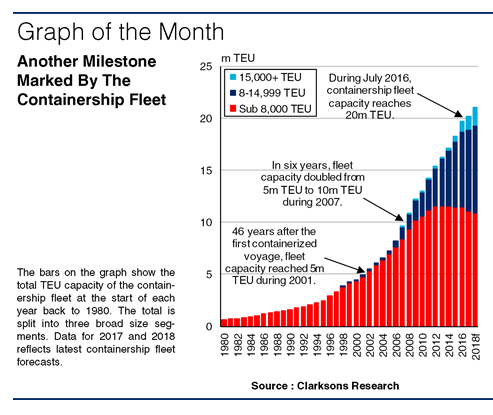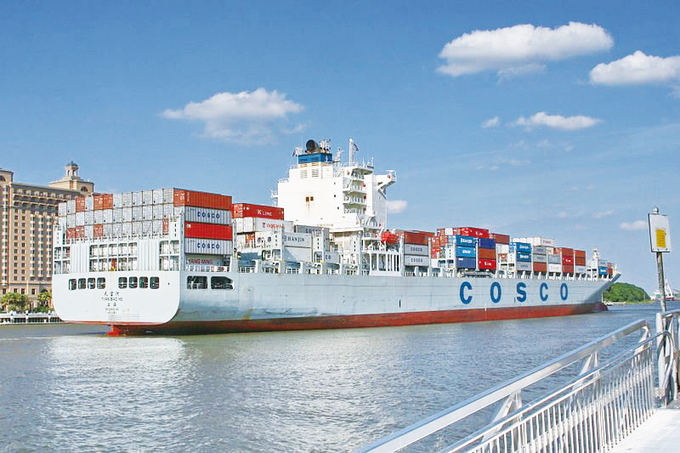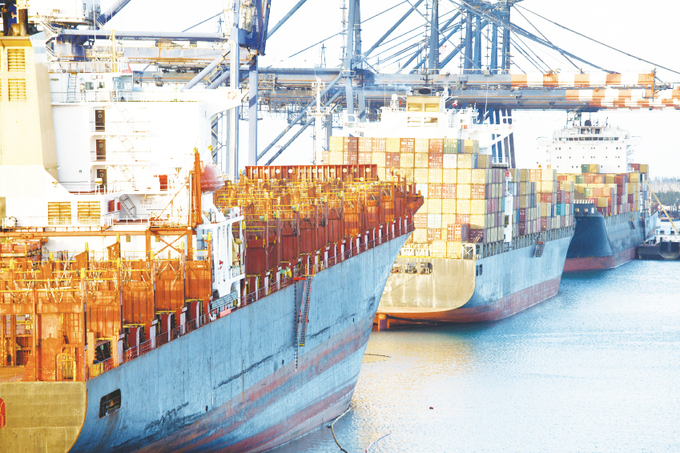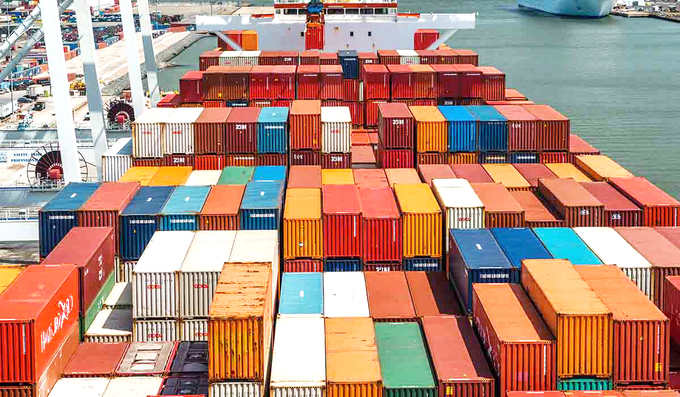For many, a stretching waistline is part of getting older, and in the sixty years since the first commercial containership voyage, the boxship fleet has been expanding significantly. During July 2016, boxship fleet capacity reached a new milestone of 20 million TEU, so it’s a good time to pause to examine the characteristics and drivers of the rapid expansion and the prospects for the future of the fleet.

Looking back, containership fleet capacity reached the 1m TEU mark back in 1984, and it had doubled to break the 2m TEU barrier before the end of 1992. Since then, the expanding boxship fleet has regularly ticked off the milestones. As the graph shows, 8,000+ TEU vessels first entered the fleet in 1997, and ten years later in 2007 total containership capacity reached 10m TEU, having doubled in six years.
By then, 8,000+ TEU vessels alone contributed over 1m TEU of capacity, and also the first 15,000+ TEU vessels had been delivered, marking a new wave of even larger ships as operators sought further economies of scale. By August 2016, the 15,000+ TEU sector accounted for 1.1m TEU, helping drive total containership capacity to the 20,000 TEU mark.

A key feature of the robust growth of the containership fleet has been consistent upsizing, with larger ships being used over time on most parts of the liner network. In 1990, the average size of units in the fleet stood at 1,270 TEU and this had risen to 1,707 TEU by 2000 and 2,700 TEU by 2010. Today, with behemoth boxships of over 19,000 TEU on the water, the average size of units in the fleet is 3,832 TEU, and the average size of units on order is a massive 8,030 TEU.
What has driven fleet expansion Fundamentally it has been the rapid rise in container trade; trade multiplied by an estimated 6-7 times 1990-2015 and fleet capacity expanded by over 11 times in response. Historically, rapid box trade expansion has been propelled by robust growth in manufactures trade, containerization of new cargoes and outsourcing of production to distant locations. Along the way, the fleet was given a helping hand by the KG finance scheme in Germany prior to the financial crisis, and by a rapid rise in shipbuilding capacity in the 2000s.
So, the boxship fleet has grown rapidly, with a CAGR between 1990 and 2015 of 10%. However, the rate of growth appears to be slowing in 2016. The orderbook looks historically slim at 17% of the fleet, scrapping has increased substantially, and contracting has slowed sharply. Capacity growth is projected to hit just 2.4% this year, down from 8.1% in 2015.
Could the latest milestone turn out in fact to be a turning point Well, if owners restrict their intake (ordering) and continue to exercise in order to shed excess weight (scrapping), that could be the case. But with containerized transport still at the heart of a globalised world economy, few would bet against the boxship sector putting on a bit more weight yet.
(Source : Clarksons)

















